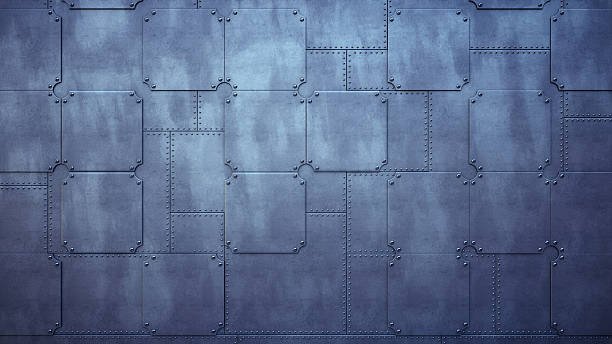What is a rivet?
The rivet is a fixing system, whose purpose is similar to that of a screw; permanently join two or more elements of the same or different material. Although the objective is very similar, aesthetically they have nothing to do with it!
The rivet consists of a cylindrical tube with a head at the end and this head is larger in diameter than the rest of the rivet. Why?
The design of this fixing element allows it to be easily inserted when inserting it into a hole. All of this in order to firmly and safely hold those pieces that we want to join, especially in blind holes!
A rivet has three very different parts:
Cylindrical-shaped rivet body, also known as stem or spike. This part is the one that is inserted between the joined pieces.
Head, it has a diameter greater than the rest of the body. And, as we have indicated before, it serves to optimally hold both pieces through the hole previously made.
The mandrel is the long, central part of the rivet. This part is the one that is inserted in the riveter and that, in addition, will be excluded from the union.
What are they used for and what types of rivets are there?
The riveting technique is one of the oldest methods, but still one of the most used.
They can be used in a wide variety of sectors; those that most use this assembly technique are: automotive, industry, household appliances, air conditioning and heating, roofs, etc.
Standard rivet:
Standard rivets are fixing elements that guarantee a firm and secure solution.
Different types of materials can be joined (aluminum, steel, copper) offering a fast and economic assembly.
Flower rivet:
This type of rivet is perfect for applications with soft or low pressure resistance materials, such as plastics, fiber and wood. Also, it is useful for making joints between rigid materials with soft materials.
In addition, this type of rivet has a very large diameter locking head and distributes the load and tightening force, reducing the probability of crushing and the risk of material breakage. Cool!
This type of rivet is used in the automotive industry, caravans, construction work and much more!
Umbrella rivet:
Accommodates thickness variations when riveting elements. This rivet is ideal for soft material or low strength material applications.
Also, it easily adapts to different variations in the thickness of the materials. It also has a high resistance to corrosion. It is clear that his name is well chosen!
Rivet moldings:
Custom rivet used to attach trim. It has a stepped body that allows a simple, fast and low-cost assembly. What more can we ask for!
Watertight Rivet:
As its name indicates, it guarantees a watertight fixation. The joints between the materials are completely fluid-tight, thus preventing liquid or vapor leaks.
How do you get it?
Well, these types of rivets prevents leaks, thanks to the retention of the stem head inside the rivet body. With this, you can avoid all kinds of electrical problems.
In addition, with the waterproof rivet, we have the possibility to join metal to metal (aluminum, steel, stainless steel) and plastic to metal. It is commonly used in the automotive industry (bodyworks, industrial vehicles), in household appliances, in construction, etc.
Oh, by the way, there are different types of rivet heads, do you know them?
Well, sure, but, in case you have doubts, here we leave them!
We can find two types of heads: domed and countersunk. The truth is that by the names they have, we can more or less get an idea of what they are like, right?
Padded: The most versatile! If you need your rivet to adapt to all kinds of materials, without a doubt, this is the head you should choose. Provides a large surface area that allows it to support most materials.
The only things that don’t fit well with a pan head are brittle materials that tend to break.
Countersunk: If what you need is to join two very thick pieces, this type of head is your best option. In addition, its design allows to achieve a flat surface.
Advantages of riveted joints:
- The joining method is cheaper,
- Two or more pieces of the same or different materials can be joined,
- There is a wide variety of rivets, you will find the one you need for sure!
- Allows joining parts, even if only one of the parts is accessible.

